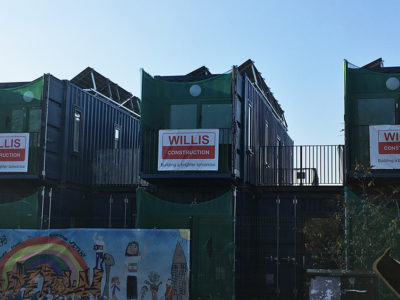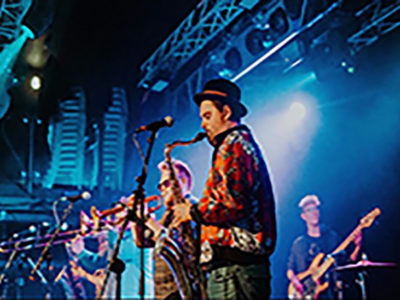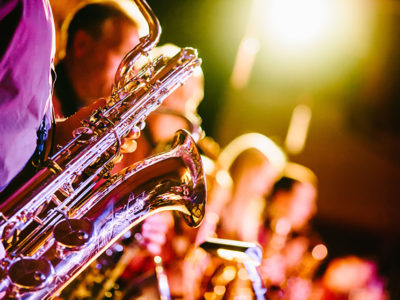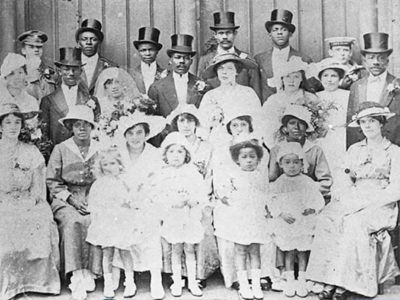Apart from the music and reminiscing, the event will be catered by chef Geraldine Trotman who promises a delicious Caribbean menu. For tickets to Casa B Side, visit WMC.
Casablanca Club was the musical epicenter of Tiger Bay for 20 years (from 1965), before it was demolished to make way for a car park. Local singer and DJ Keith Murrell shares his fondest memories and involvement with Casa B Side.
How are you involved in this year’s event?
I’ll primarily be focusing on singing with my band Roots & Branches. I also came up with the title. Casa B was the local’s name for the club and the B Side was the tune that most DJs didn’t play, which is fitting to describe a scene where nobody expected to listen to what was happening in the mainstream.
What did Casa B stand for in Butetown?
Although mixed, the community has historically been characterised as black or coloured. This de facto black community faced (faces) discrimination and degrees of social and cultural exclusion – whilst at the same time maintaining quite strong cultural links, initially with the Caribbean and West Africa, later black America and then the newer black communities in the UK. Music was a central feature in all of this and Butetown was tuned into black music from the earliest days.
Cardiff Docklands was renowned for its laissez-faire nightlife, which also suited music and musicians unable or unwilling to get exposure in the mainstream. The Casa was the epitome and the longest running local club. There were all kinds of social and musical developments in the wider black community over this period. Some of them were –
- Black-Butetown people still faced discrimination in social activities outside Butetown. There was also high unemployment in the community, which equalled people with little money and plenty of time to enjoy it.
- Black music was potent over this period and often spoke directly to communities like Butetown. This music was also generally excluded from the mainstream. So, the Casa became our club playing our music.
- Aside from the music, it was different with regards to the mix of people that attended. The Casa became a community centre and village pub and for the most part we all knew each other.
Despite, or maybe because of the club’s tough reputation (representing a view about the area in general) it was a place where people felt safe and free from wider society’s expectations and constraints. Butetown was always the coolest community in Cardiff and the Casa B confirmed that. But despite being our club, it was never totally about being exclusive and patrons came from all over. The scene attracted many, particularly those with some interest in black music and culture. However, it wasn’t quite universally popular in the community. Many local people would never set foot in there.
It’s worth emphasising that the music itself was rarely concerned with the colour of the artists. There were many black artists that would never get heard there and many white artists that would. This is especially true with regards to the live bands.
Obviously, using terminology like black and white is problematic, but that said, the club was actually a product of those problems.
What were some of the most memorable performances at the club?
For the most part it was local bands. Of the local ones, I would have to mention the Outsiders who were not only very local but very good. There were bands from around, like Red Beans and Rice, Denym, Questionnaires, Moira and The Mice, Snatch It Back and more. There were regular Welsh language artists, such as Bando and Endaf Emlyn. I sang there with Geraint Jarman a’r Cynganeddwyr (poets) and my own band, Roots & Branches. With regards to visiting bands or headliners, I remember acts like Dudu Pukwana, Gonzales, Ronnie Scott, Jimmy Ruffin, Steve Marriott and Misty in Roots. There was a smattering of new wave, punk acts that passed through but to be honest I wasn’t too impressed then, or now.
For more on the history of Cardiff Docklands and Tiger Bay, visit Butetown History and Arts Centre or Butetown Community Centre.
Wales Millennium Centre (WMC) will bring to life a piece of Butetown history on 20 November. Paying homage to Tiger Bay’s iconic music venue Casablanca Club, Casa B Side will showcase local artists to celebrate the legendary tunes of Butetown.
“These shows are important so that people participate in live music,” says local DJ Keith Murrell. “It’s important for WMC to interact with all kinds of people as well as for the community to feel welcome at WMC and other mainstream institutions.”

Hannah Wynn Jones from WMC said, everyone who worked on the event last year had a wonderful time. Image credit: Jon Pountney
Hosted on WMC’s foyer stage, the live music event will see a night of jazz, funk, hip hop and reggae from Li Harding with The Gary Phillips Trio, Messiah Dub Club, Roots & Branches and more.
Hannah Wynn Jones from WMC said, “Casa B Side couldn’t happen without the support and talent of local artists and the community. There’s a lot of love for a place that welcomed everybody, something the Centre aspires to.”

Initially a Bethel Chapel, the building on Mount Stuart Square transformed into one of Butetown’s last nightclubs. Image credit: Anthony Campbell
Here is a video from last year’s Night at the Casablanca at Wales Millennium Centre. Courtesy: WMC
Apart from the music and reminiscing, the event will be catered by chef Geraldine Trotman who promises a delicious Caribbean menu. For tickets to Casa B Side, visit WMC.
Casablanca Club was the musical epicenter of Tiger Bay for 20 years (from 1965), before it was demolished to make way for a car park. Local singer and DJ Keith Murrell shares his fondest memories and involvement with Casa B Side.
How are you involved in this year’s event?
I’ll primarily be focusing on singing with my band Roots & Branches. I also came up with the title. Casa B was the local’s name for the club and the B Side was the tune that most DJs didn’t play, which is fitting to describe a scene where nobody expected to listen to what was happening in the mainstream.
What did Casa B stand for in Butetown?
Although mixed, the community has historically been characterised as black or coloured. This de facto black community faced (faces) discrimination and degrees of social and cultural exclusion – whilst at the same time maintaining quite strong cultural links, initially with the Caribbean and West Africa, later black America and then the newer black communities in the UK. Music was a central feature in all of this and Butetown was tuned into black music from the earliest days.
Cardiff Docklands was renowned for its laissez-faire nightlife, which also suited music and musicians unable or unwilling to get exposure in the mainstream. The Casa was the epitome and the longest running local club. There were all kinds of social and musical developments in the wider black community over this period. Some of them were –
- Black-Butetown people still faced discrimination in social activities outside Butetown. There was also high unemployment in the community, which equalled people with little money and plenty of time to enjoy it.
- Black music was potent over this period and often spoke directly to communities like Butetown. This music was also generally excluded from the mainstream. So, the Casa became our club playing our music.
- Aside from the music, it was different with regards to the mix of people that attended. The Casa became a community centre and village pub and for the most part we all knew each other.
Despite, or maybe because of the club’s tough reputation (representing a view about the area in general) it was a place where people felt safe and free from wider society’s expectations and constraints. Butetown was always the coolest community in Cardiff and the Casa B confirmed that. But despite being our club, it was never totally about being exclusive and patrons came from all over. The scene attracted many, particularly those with some interest in black music and culture. However, it wasn’t quite universally popular in the community. Many local people would never set foot in there.
It’s worth emphasising that the music itself was rarely concerned with the colour of the artists. There were many black artists that would never get heard there and many white artists that would. This is especially true with regards to the live bands.
Obviously, using terminology like black and white is problematic, but that said, the club was actually a product of those problems.
What were some of the most memorable performances at the club?
For the most part it was local bands. Of the local ones, I would have to mention the Outsiders who were not only very local but very good. There were bands from around, like Red Beans and Rice, Denym, Questionnaires, Moira and The Mice, Snatch It Back and more. There were regular Welsh language artists, such as Bando and Endaf Emlyn. I sang there with Geraint Jarman a’r Cynganeddwyr (poets) and my own band, Roots & Branches. With regards to visiting bands or headliners, I remember acts like Dudu Pukwana, Gonzales, Ronnie Scott, Jimmy Ruffin, Steve Marriott and Misty in Roots. There was a smattering of new wave, punk acts that passed through but to be honest I wasn’t too impressed then, or now.
For more on the history of Cardiff Docklands and Tiger Bay, visit Butetown History and Arts Centre or Butetown Community Centre.






